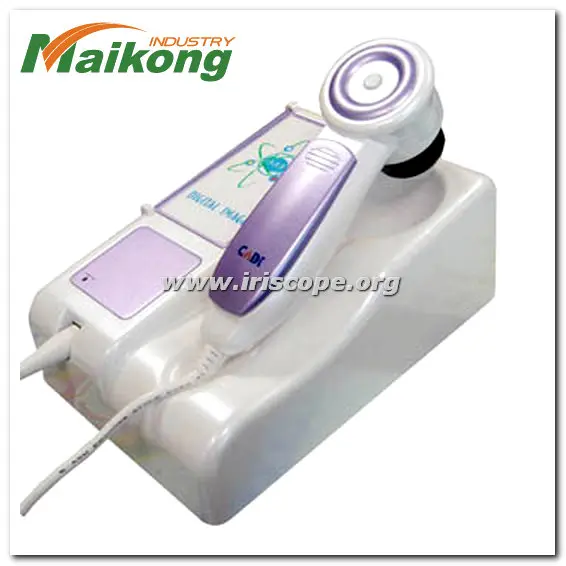History of IridologyExamining the human eye to help determine one’s health is an ancient practice that dates back at least to the ancient Greeks.


The first clear description of the principle of homogeneous isophoric optics (without using the term iridology) is found in Chiromatica Found in Medica, a famous work published in 1665 by Philippus Meyeus (Philip Meyen von Coburg) was reprinted in 1670 and 1691. The term Augendiagnostik (“ocular diagnosis,” loosely translated as iridology) began in the 19th century with the Ignatz von Peczely, a Hungarian physician. the most common story is when he saw a patient being treated by a The eyes of a man with a broken leg and the eyes of an owl that broke Von Peczely’s leg years ago (Per Peczely) This diagnostic tool was conceived after the appearance of similar streaks. At the First International Congress of Iridology, Ignaz von (Peczely), nephew of August von Peczely. The doctor denied that the myth was falsified and insisted that it could not be replicated. A homeopathic remedy for specific diseases and a new iris sign was described in the early 1900s.
However, Rev. Felker suffered a long and bitter lawsuit. The Pastor Felke Institute, founded in Heimheim, Germany, was a major center for research and training in iridology. Iridology became popular in the United States in the 1950s when American chiropractor Bernard Jensen began to use his own The method of instruction. This is similar to P. Johannes Thiel, Eduard Rahn. Lahn) (who became an American under the name Edward Lane) and J. Haskell J Haskell Kritzer has a direct connection. Jensen insists on human exposure to toxins and the use of natural foods as detoxifiers. Few medical researchers have managed to secure funding to study possible non-visual functions of the eye. In a paper published in Medical Hypotheses, one such The team sought to explain the observed pattern of iris transparency by hypothesizing a so-called systemic ocular function that distributes light to the in the serrated rim (the edge of the optic nerve retina). Based on this hypothesis, researchers have developed experimental trans-iris light therapy. However, to date, there has been no independent confirmation of the theory and methodology. Other results of the studies mentioned include early attempts at computerized iris imaging for iris diagnosis.
Camera For Iridology
iriscope a vendre
How does iridology work? -Iridology The basic principle of iridology is thought to be related to the nerve connection between the eye and the brain via the optic nerve. This connection makes it possible to form circuits in every part of the body and to distinguish between healthy and unhealthy nerve supply. Iris fibers can reflect back to specific organs that are in an acute or chronic state, and their color and texture can be distinct.
How to take an iris image by camera for iridology?
Pull down the lower eyelid with your thumb while lifting the upper eyelid with your index finger until you can see the entire eye (you must see the top of the eye and the (bottom). If that doesn’t work, open your eyes wide so the photographer can see the top and bottom of the eye. Then look directly into the camera’s eye and emit a flashlight, or pin the light directly on each corner of the eye (one eye at a time). This will illuminate the iris fibers so that the camera can pick up the iris fibers. All that is needed is a photo of the iris (eye), not the entire face.

How to use camera for iridology’s software?(support apple MAC IOS)
1) Add customer information to the software.
2) Edit or delete the client information.
3) Capture iris disease eye images into the software.
4) Analyze iris images of the eye.
5) Draw iridological analysis reports.
6) Compare eye images before and after iris examination.
7) Compare iridologic analysis reports.

What is an camera for iridology?
Please feel free to check out our USB camera for iridology, Iridology Camera, Iris Camera, Ophthalmic and Scleral USB System ccarry case T on this website!
The Maikong Pebble Pro Iridology Camera was created for non-technical naturopaths and naturopaths, iridologists and herbalists.
The Maikong Pebble Pro camera for iridology takes up very little space on a desktop and is very Easy to carry. Once the MAC or PC has the software installed, all you have to do is plug the camera into the USB.
The Maikong Iridology iris camera doesn’t need a chin rest, doesn’t need the dreaded flash, doesn’t have ambient light issues, and doesn’t need to carry a bulky case.
The Maikong Pebble Prp is priced lower than other “camera only” models.
The latest Maikong model Iriscameras have 8 lights (for blue eyes) and more than 2 side illuminated LEDs (for brown eyes).
The indicator light (white dot) is in the pupil area! There are no artifacts (white dots or streaks) in the iris, so pictures are better than those taken with “open” system cameras.




How to use the Camera for Iridology?


























